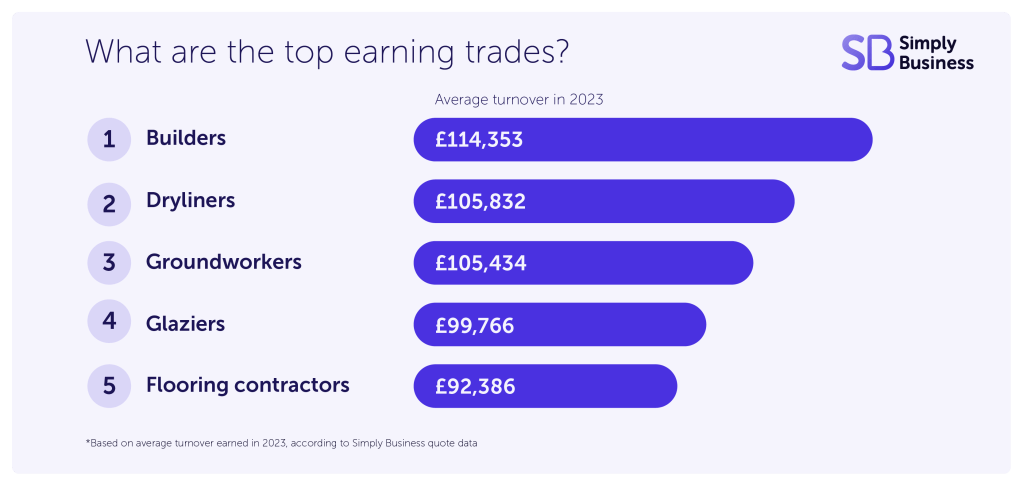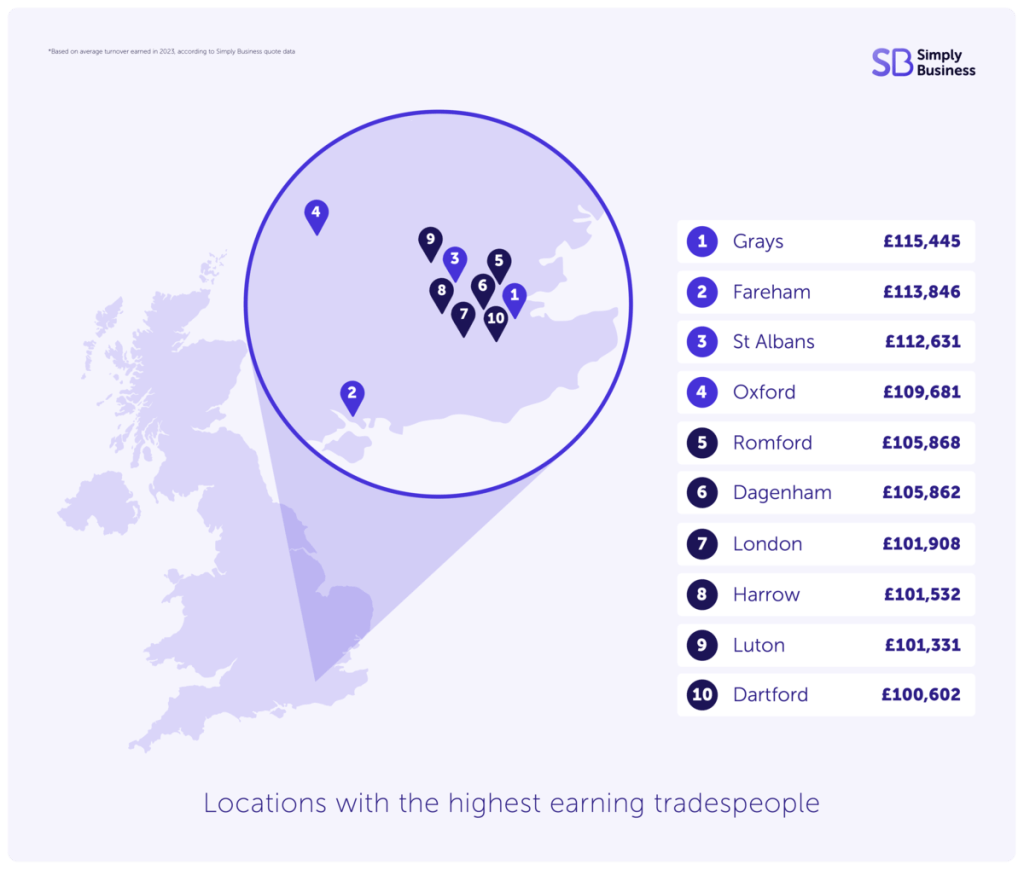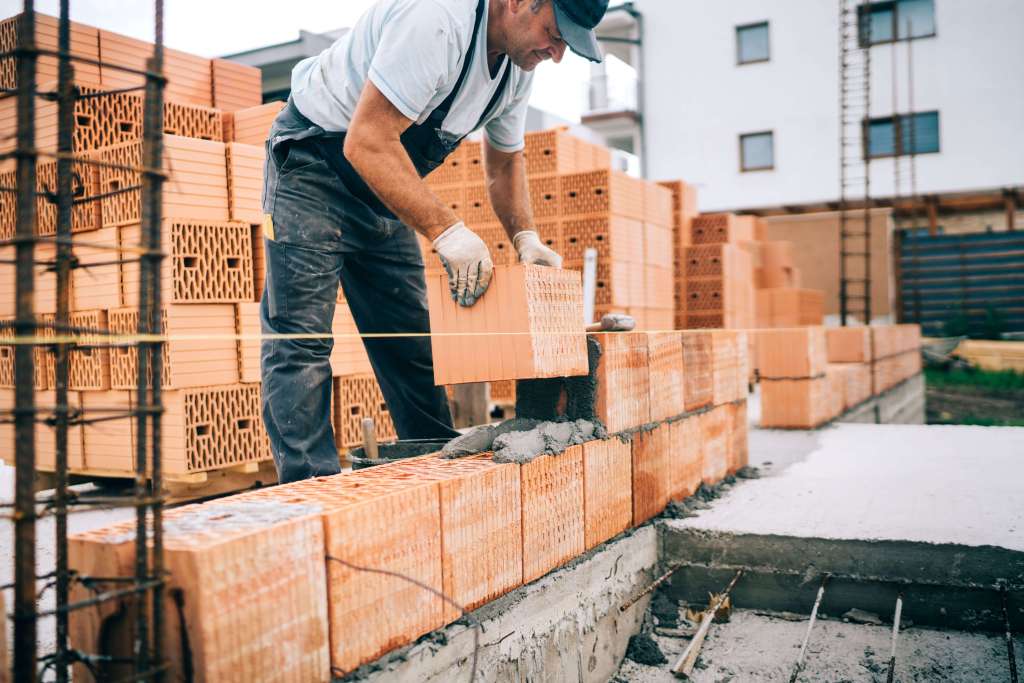If you enjoy working with your hands and want to join an industry that’s seeing a surge in demand, becoming a builder could be for you.
Builders are often self-employed and this can be a great way to earn a living while being your own boss. Read on for your step-by-step guide to getting started where we’ll cover the following:
What does a builder do?
Builders oversee and work on a range of construction projects, as well as repairs and renovation. You could work on residential buildings, for example on remodelling, brickwork, and plastering. Or you may work on small commercial projects doing minimal repairs and restoration work.
It’s not uncommon for self-employed builders to do a bit of everything when it comes to domestic construction projects. While with specialist skills you may be subcontracted to work on larger commercial or non-residential property projects.
How much do builders earn in the UK?
The average builder salary in the UK is £43,500, according to job site Totaljobs.
However, as a self-employed builder you can set your own hours and day rates. This can vary depending on experience and specialism, as well as where in the country you’re working. A builder day rate can range from £150 to £280.
Your rate might vary for different skills though. For example, a bricklayer salary in the UK can be around £150 to £200.
When it comes to working environment, you’ll generally be working outdoors, but there may be some internal work too. You’re likely to work in a variety of settings, both residential and commercial, including houses, hospitals, or even roads.
As you set your own rates, there’s no set self-employed minimum wage, but make sure you’re aware of the current national and living wage rates if you employ anyone in your business.
And as you can see from our data, builders ranked as the top earning trade in the UK in 2023.

But as you can see from the image below, location also plays a role in your earning potential as a tradesperson.

Becoming a self-employed builder: a 7-step guide
If you’re thinking of starting your own business, read on for our seven-step guide to becoming a self-employed builder.
1. Consider builder qualifications and training
If you’re becoming a builder for the first time, you’ll need some training. Many builders learn on the job or through apprenticeships, but there are other options available if this isn’t possible.
You could go down the route of formal construction qualifications and adult courses at your local training provider. For example, City and Guilds offers a General Construction course, plus specialist courses in:
Depending on your long-term goals and business plan, you may start by building general skills, and consider specialising further when you have some experience.
2. Setting up your business
You have two main choices when it comes to choosing a legal structure for your business: sole trader or running a limited company.
Being a sole trader is likely to be the simplest option, though you’ll still need to register with HMRC and complete an annual Self Assessment tax return. That said, there can be advantages to setting up a limited company and paying yourself that way, depending on your earnings and other factors.
Read more about the differences between sole traders and limited companies to decide what works for your business.
3. Know your tax responsibilities
It’s important that you understand your tax responsibilities as a self-employed builder. You’ll need to register with HMRC as soon as you start trading, and you’ll need to complete and file an annual Self Assessment tax return.
You can subtract some self-employed expenses from your turnover when working out how much tax you need to pay.
As a builder, your tax-deductible expenses will likely include things like:
- vehicle costs (fuel, insurance, and vehicle tax)
- professional clothing
- tools
- equipment
If you’re working from a temporary workplace, you can also claim for travel and subsistence costs.
Our guide to what tax you need to pay explains more about how this works.
4. Follow health and safety guidelines
Working on building and construction sites comes with risks. Working at height, noisy environments, and asbestos are just some of the dangers of a building site, so you must always use the correct personal protective equipment (PPE) and follow health and safety regulations.
Make sure you’re familiar with government guidance on health and safety in construction and read our guide to carrying out a risk assessment.
The Health and Safety Executive also has specific guidance for builders, including resources on preventing injury when handling plasterboard, working in dusty environments, and lifting heavy materials.
5. Look for builders insurance
You’ll need a tailored builders insurance policy to protect you and your business. These can be different depending on the nature of your work – for example, you might need specialist cover if you’re working at height.
These are some of the common covers for builders:
- tools insurance – insure your tools against loss, damage, or theft
- public liability insurance – covers legal expenses or compensation claims if clients or members of the public get injured or lose out financially because of your work
- personal accident insurance – a cash payout in case of bodily injury or death following an accident
- employers’ liability insurance – this is a legal requirement if you employ anyone in your business
With Simply Business, you can combine the covers you need into a single, tailored builders insurance policy.
6. Win clients and build your business
Now that you’re all set up, it’s time to start winning business.
It pays to stay local when you’re just starting out. You might consider putting up cards in local businesses, dropping flyers around your neighbourhood, or contacting businesses directly.
While there are many ways to market a business, it’s vital to have an online presence. In fact, research from Yell shows just how important it is to keep your trades business website updated.
Here are just a few tips to get you started:
- create a simple but attractive website – there are plenty of free website builders out there that you can use to show off your portfolio and make it easy for potential customers to contact you
- feature your business on online directories for tradespeople – sites like Checkatrade, Rated People, and MyBuilder are a great way to get your name out there
- set up a Google My Business profile – it’s the easiest way for customers to find you when they search online for builders in your area, and you can add your contact details and photos too (so make sure you keep it updated)
As your business grows, you might want to consider speaking to construction or architecture firms directly. Larger companies can also be a great source of repeat business, and could ultimately help you expand from a self-employed builder into a small construction business.
7. Get your books in order
Keeping track of your income and expenses is an important part of running a business. Not only for filing your tax return every year by 31 January, but for making sure your business is healthy and making a profit.
Here are some guides to help ease the pain of business admin:
Still weighing up your options?
If you’re not sure becoming a professional builder is for you, here are some other popular trades businesses you could explore:
Small business guides and resource
- What is the CIS?
- How to buy a van for your business
- Which trade earns the most – and where?
- What type of business insurance do I need?
What’s your experience of becoming a builder? Let us know in the comments.
Are you protecting your tools?
As the UK’s biggest business insurance provider, we know the importance of covering your tools. Why not take a look now and build a quick, tailored tool insurance quote?
Photograph 1: Hoda Bogdan/stock.adobe.com
